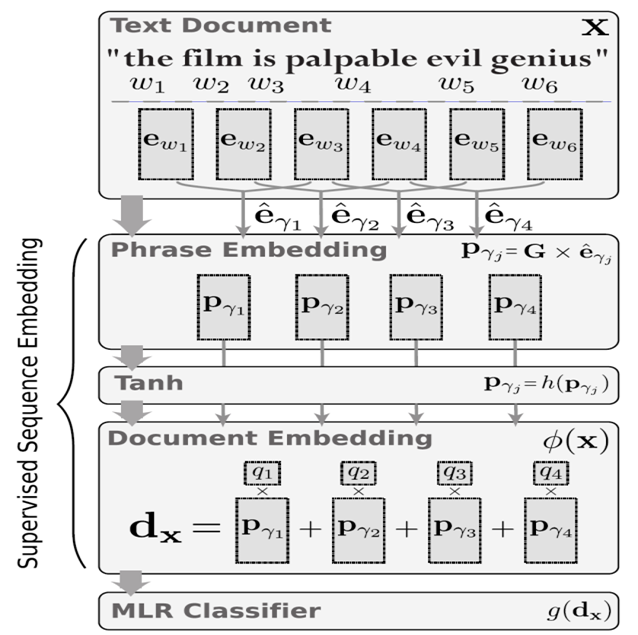MACHINE LEARNING
PROJECTS
PEOPLE
PUBLICATIONS
PATENTS
Semantic Analysis & Reasoning
We develop several types of algorithms for high-level semantic analysis, which are used for tasks such as scene interpretation, document retrieval and question answering. For text interpretation, a syntactic analysis extracts relevant elements followed by concept interpretation. To combine different data types, a data-specific module first generates metadata representations that are integrated into a deep learning network.
Supervised sequence embedding (SSE) is a simple and efficient technique to interpret shorter segments of text, such as product reviews or e-mail messages. Short phrases (n-grams) are modeled in a latent space. The phrases are then combined to form document-level latent representations, where position of an n-gram in the document is used to compute corresponding combining weight. The resulting two-stage supervised embedding is then coupled with a classifier to form an end-to-end system that we apply to the large-scale sentiment classification task. SSE does not require feature selection, and its parameter space grows only linearly with the size of the n-grams.


